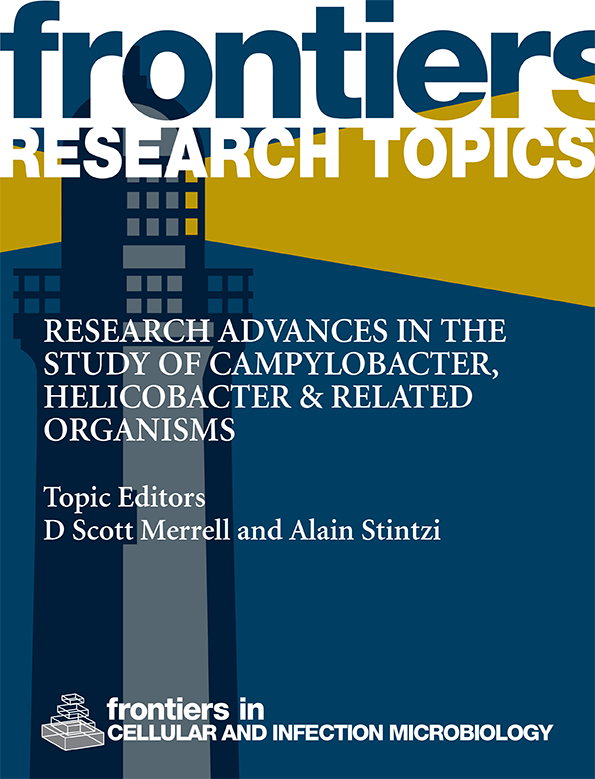补体 C3 沉积通过促进自噬限制内化金黄色葡萄球菌的增殖
IF 4.6
2区 医学
Q2 IMMUNOLOGY
Frontiers in Cellular and Infection Microbiology
Pub Date : 2024-09-06
DOI:10.3389/fcimb.2024.1400068
引用次数: 0
摘要
补体 C3(C3)在内化之前通常会自发沉积在入侵细菌的表面,但 C3 包膜对细胞反应的影响在很大程度上是未知的。金黄色葡萄球菌(S. aureus)是一种表面性细胞内病原体,它能破坏自噬,并在吞噬细胞和非吞噬细胞中复制。在本研究中,我们在细胞感染前通过补体溶血将 C3 成分沉积在金黄色葡萄球菌表面,并证实细菌侵入细胞后 C3 涂层仍留在细菌表面,这表明金黄色葡萄球菌无法逃脱或降解 C3 标记。我们发现,金黄色葡萄球菌上的 C3 沉积明显增强了细胞的自噬反应,并将这些反应区分为异噬,而不是 LC3 相关吞噬(LAP)。此外,这种上调是由于自噬相关 16-like 1(ATG16L1)的招募和直接相互作用,从而导致细胞内自噬依赖性抵抗细菌生长。有趣的是,这种自噬效应只有在 C3 被酶裂解激活后才会发生,因为没有经过补体级联反应裂解的全长 C3 虽然能与 ATG16L1 结合,但却不能促进自噬。这些研究结果证明了细胞内 C3 在细菌感染时的生物学功能,即增强自噬作用以对抗内化的金黄色葡萄球菌。本文章由计算机程序翻译,如有差异,请以英文原文为准。
Complement C3 deposition restricts the proliferation of internalized Staphylococcus aureus by promoting autophagy
Complement C3 (C3) is usually deposited spontaneously on the surfaces of invading bacteria prior to internalization, but the impact of C3 coating on cellular responses is largely unknown. Staphylococcus aureus (S. aureus ) is a facultative intracellular pathogen that subverts autophagy and replicates in both phagocytic and nonphagocytic cells. In the present study, we deposited C3 components on the surface of S. aureus by complement opsonization before cell infection and confirmed that C3-coatings remained on the surface of the bacteria after they have invaded the cells, suggesting S. aureus cannot escape or degrade C3 labeling. We found that the C3 deposition on S. aureus notably enhanced cellular autophagic responses, and distinguished these responses as xenophagy, in contrast to LC3-associated phagocytosis (LAP). Furthermore, this upregulation was due to the recruitment of and direct interaction with autophagy-related 16-like 1 (ATG16L1), thereby resulting in autophagy-dependent resistance to bacterial growth within cells. Interestingly, this autophagic effect occurred only after C3 activation by enzymatic cleavage because full-length C3 without cleavage of the complement cascade reaction, although capable of binding to ATG16L1, failed to promote autophagy. These findings demonstrate the biological function of intracellular C3 upon bacterial infection in enhancing autophagy against internalized S. aureus .
求助全文
通过发布文献求助,成功后即可免费获取论文全文。
去求助
来源期刊

Frontiers in Cellular and Infection Microbiology
IMMUNOLOGY-MICROBIOLOGY
CiteScore
7.90
自引率
7.00%
发文量
1817
审稿时长
14 weeks
期刊介绍:
Frontiers in Cellular and Infection Microbiology is a leading specialty journal, publishing rigorously peer-reviewed research across all pathogenic microorganisms and their interaction with their hosts. Chief Editor Yousef Abu Kwaik, University of Louisville is supported by an outstanding Editorial Board of international experts. This multidisciplinary open-access journal is at the forefront of disseminating and communicating scientific knowledge and impactful discoveries to researchers, academics, clinicians and the public worldwide.
Frontiers in Cellular and Infection Microbiology includes research on bacteria, fungi, parasites, viruses, endosymbionts, prions and all microbial pathogens as well as the microbiota and its effect on health and disease in various hosts. The research approaches include molecular microbiology, cellular microbiology, gene regulation, proteomics, signal transduction, pathogenic evolution, genomics, structural biology, and virulence factors as well as model hosts. Areas of research to counteract infectious agents by the host include the host innate and adaptive immune responses as well as metabolic restrictions to various pathogenic microorganisms, vaccine design and development against various pathogenic microorganisms, and the mechanisms of antibiotic resistance and its countermeasures.
 求助内容:
求助内容: 应助结果提醒方式:
应助结果提醒方式:


